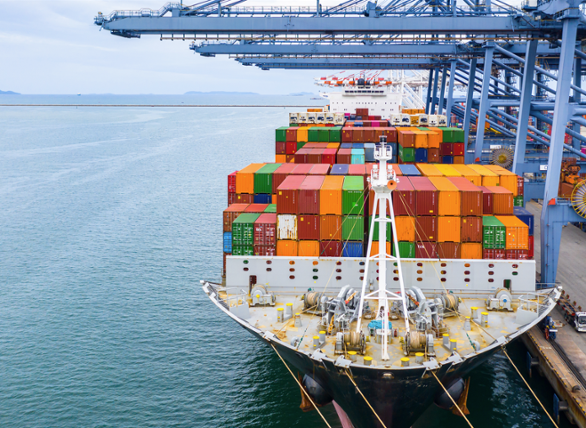Infrastructure Poised to Mostly Weather Tariff Storm
Key Takeaways
- A new regime of tariffs or even just tariff uncertainties will likely create the need for more infrastructure to support reshoring.
- Regulated utilities are notable for their lack of exposure to international trade and may benefit as higher capex costs translate into larger asset bases and therefore earnings.
- Recession worries and resultant lower bond yields should provide a valuation tailwind for longer-duration assets, including infrastructure.
After shrugging off the risks for months, markets have been waking up to the reality of a new — if ever-changing — tariff regime from the U.S. Market reaction has become increasingly volatile and negative, with recession concern growing.
How does infrastructure fare in this whipsaw environment? Theoretically, the enactment of a tariff changes the trading dynamics between economies, which in turn, changes the flow of trade. For the importing nation, the local consumer will have to seek out domestic alternatives or pay a higher premium for imported goods. From the perspective of the exporting economy, on the assumption that the volume of goods produced remains unchanged, these goods can be redirected to other countries. This redirection of trade flow has a net positive impact on infrastructure.
Long-Term Redirecting of Trade Requires Recalibration of User-Pays Infrastructure
From a global perspective, user-pays infrastructure, specifically port, road and rail operators, move goods throughout the global economy as well as domestically. Given that tariffs affect trade flows, these companies are set to be the most exposed to the impact of U.S. tariffs, although as goods are rerouted, it is not immediately clear which are winners and losers.
For U.S. rail, in the short term, many do not expect a material change in volumes. Until new manufacturing/supply chains are built out in the U.S. (this could take up to five years), goods still need to come from overseas. Hence, in the short term, volumes will be lower, but not severely affected. We observed this effect with Trump’s first round of tariffs in 2018. In the long run, once new supply chains are established in the U.S., with manufacturing closer to end user destinations, this would likely mean lower length of haul volumes for the rails, a net negative. Longer term, however, reshoring should boost GDP, which should have a multiplier effect on rail volumes.
Energy Infrastructure in a Crosswind
Another infrastructure area where there is cross-border activity is energy infrastructure — pipelines that move oil and gas over large distances, for example across the U.S./Canada border, or from the well heads to the coastal export hubs to be refined and/or shipped overseas. The strategic importance of oil and gas partially explains why from the start it was given a lower tariff than other goods by President Trump, although even this lower tariff and the uncertainty regarding future tariffs are a source of pressure for volumes as well pipeline construction. Pipelines also need a lot of steel, so they could face some cost pressure from steel tariffs. Most likely we will see a pivot from building cross-border pipelines to domestic pipelines to support increased drilling activity and demand from data center and intermittent renewables owners for gas-fired generation facilities.
Utilities: Local Market Defensive Plays
The largest weight in our infrastructure portfolios, however, is to regulated utilities, which are notable for their lack of exposure to international trade, as utilities businesses are for the most part locally regulated entities delivering essential services (Exhibit 1). Regulated utilities actually may benefit in that their capital expenditures involve a high component of imported products, from steel to copper to transformers. Should these items increase in price due to tariffs, this will increase the utilities’ asset base and therefore their earnings, assuming steady allowed returns from regulators.
Exhibit 1: S&P 500 Sectors and Non-U.S. Revenue

As of 28 February 2025.
In addition, in an environment of elevated equity market volatility, slowing growth and rising concern of a recession, infrastructure in general, and utilities in particular, should stand out for their resilient revenues and overall stability. Should bond yields decline as the market worries about a recession, this should provide a valuation tailwind for longer-duration assets, including infrastructure.
Related Perspectives

Valuation of Infrastructure Assets Q1 2025
In our latest Valuation update, Portfolio Manager, Simon Ong, discusses the latest trends affecting the infrastructure asset class and reviews current valuations.
Read full article

